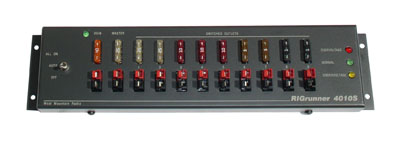Poorboyota26
Adventurer
I have to design and build a project of some sort that will be usefull to me and show what I've learned while at school. A Capstone project.
I've decided to design a power management/observation box for Auxiliary power drains and supplies.
The "box" will consist of the following:
1 12 volt input (I'm thinking 30-40 amp)
1 variable voltage for solar or wind generation
6 12 volt outputs for various needs and in varying amperages
Digital monitoring display
The outputs will increas in importance so that as the input/Battery voltage is discharged the box will shut off outputs from least critical to most critical. Keeping enough charge on the battery for vehicle startup.
The display will have:
Alternator charging amps
batery voltage
solar/wind voltage
solar/wind Amperage
individual draw for each output
when the second to last out put is shut off there will be an alarm and maybe a blinking led to indicate that charging is needed.
I would like from you all:
Input on some of the most comon amperage draws ie, Fridge, Lights that are run while camped for cooking etc, Aux driving lights, Heat blankets, water pumps, Ham/CB radio's.
This system is to help keep batteries from total discharge and avoid dead batteries.
I know there are other systems out there, I haven't gotten that far in my research yet. If any of you would like to post them (links and photos) that would be great!
Thanks for the help!
Kevin
I've decided to design a power management/observation box for Auxiliary power drains and supplies.
The "box" will consist of the following:
1 12 volt input (I'm thinking 30-40 amp)
1 variable voltage for solar or wind generation
6 12 volt outputs for various needs and in varying amperages
Digital monitoring display
The outputs will increas in importance so that as the input/Battery voltage is discharged the box will shut off outputs from least critical to most critical. Keeping enough charge on the battery for vehicle startup.
The display will have:
Alternator charging amps
batery voltage
solar/wind voltage
solar/wind Amperage
individual draw for each output
when the second to last out put is shut off there will be an alarm and maybe a blinking led to indicate that charging is needed.
I would like from you all:
Input on some of the most comon amperage draws ie, Fridge, Lights that are run while camped for cooking etc, Aux driving lights, Heat blankets, water pumps, Ham/CB radio's.
This system is to help keep batteries from total discharge and avoid dead batteries.
I know there are other systems out there, I haven't gotten that far in my research yet. If any of you would like to post them (links and photos) that would be great!
Thanks for the help!
Kevin

